First tooth? To polish!
First tooth? To polish!
Brush as soon as the first tooth breaks through
Your baby is already 6 months old. A milestone. There is a good chance that a tooth will break through soon. You may already see a bulge in the middle of the lower jaw. Soon the first tooth will appear. Immediately start brushing your teeth as soon as you see the first tip of the tooth.
Fluoride toddler toothpaste
Brush the teeth once a day with fluoride toothpaste for toddlers. The amount of fluoride in fluoride toddler toothpaste is adapted to use by small children. Fluoride is a natural substance that makes the enamel harder and therefore less vulnerable. Using the right amounts of fluoride helps prevent cavities in teeth. For children from 2 years, brush their teeth twice a day with fluoride toddler toothpaste. Switch to adult fluoride toothpaste from age 5. You can also use toothpaste marked "child" or "junior." Then look at the age indicated here (for example 5-12 years).
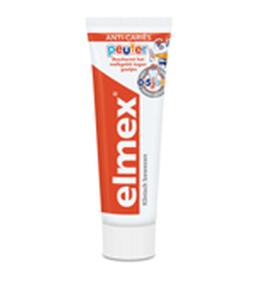
Brush with a toddler toothbrush
With a small brush you can easily reach all teeth and molars. Use a toddler toothbrush with soft bristles.
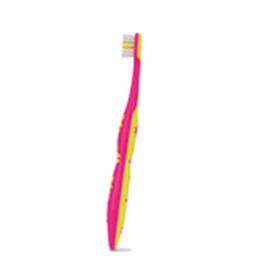
Brushing your teeth: a daily ritual
Make your child familiar with brushing teeth in a playful way. Make it a daily recognizable ritual. At first, applying fluoride with the toothpaste is more important than getting the brush everywhere. Brush the tips of new teeth that erupt immediately. The enamel of newly erupted teeth and molars is not yet strong. They are therefore extra sensitive to getting cavities. Brush your child's teeth daily until they are 10 years old.
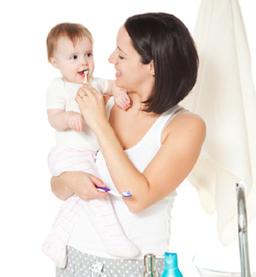
Brushing your teeth, how do you do that?
For example, put your child on the changing mat, on the bed or take him on your lap when you brush his teeth. Make sure you support the head and can see well into the mouth. Is your child bigger already? Then stand or sit diagonally behind him and turn his head towards the light. Place the toothbrush straight on the teeth. Brush gently using short horizontal strokes. Then you brush away the harmful dental plaque. You can also use a children's electric toothbrush. Brush in a fixed order and according to the 3 B's: Inside, Outside and Top. Always brush the edge of the gums.
Brush the teeth in the lower jaw first
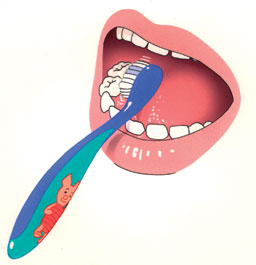
Start with the inside
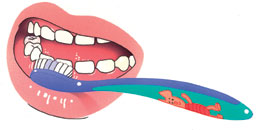
Then brush the outside
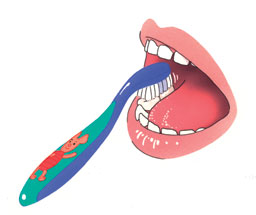
and then on top (the chewing surfaces)
Then brush the teeth and molars in the upper jaw
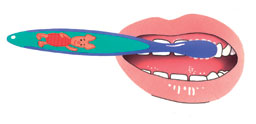
Then brush the outside
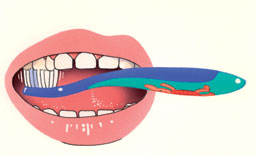
And finally on top
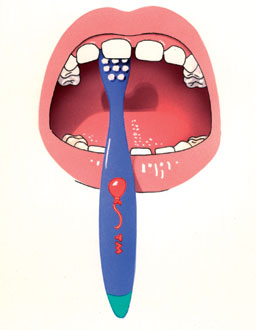
Start again on the inside first
First tooth? To the dentist!
Take your child to the dental care practice when the first tooth breaks through. For example, if you go for a check yourself. The dentist or dental hygienist explains how you can best care for children's teeth. You also learn the right feeding and brushing habits for your child at an early age. If your child comes to the oral care practice at a young age, it will be given sufficient opportunity to get used to and become familiar with the environment and the employees. Your practitioner will indicate when your child should return to the practice.
The milk teeth
A child's small mouth cannot fit adult teeth. That's why you get the milk teeth first. The deciduous teeth are important for biting, chewing, speaking and swallowing. The deciduous teeth influence the development of the face and jaws. In addition, it plays an important role in the development of permanent teeth. A child automatically exchanges its milk teeth for permanent teeth. You might think that it is therefore not important to take good care of the baby teeth. Nothing is less true. Poor care can cause cavities and gum disease. This can hurt, so that your child eats worse, does not feel well or sleeps less well. Poor care of the milk teeth can also affect the permanent teeth. This happens, for example, if milk teeth or molars are lost prematurely. Then there is often too little space for the permanent teeth.
When do children get their baby teeth and molars?
The age at which children get their teeth differs per child. Usually the first baby tooth erupts between 6 and 9 months. The first 2 milk teeth emerge at the bottom in the middle. This is followed by the 2 middle incisors at the top. The last milk molar usually appears between 24 and 30 months. A complete deciduous set consists of 12 teeth and 8 molars. Both the teeth of the deciduous teeth and those of the permanent teeth usually erupt in a certain order (see drawing).
Thumb or pacifier?
Sucking is a baby's natural, instinctive need. Children like to suck their thumb or pacifier. Usually this does not cause any problems for the deciduous teeth. If the permanent incisors erupt, the sucking can push the upper teeth and jaw forward. Does your baby thumb? Rather give a dental teat. A child puts his thumb in his mouth faster and more often. You can easily remove a pacifier. That is why it is usually easier to unlearn soother sucking. In any case, learn to stop sucking your thumb or teat as early as possible, but in any case before breaking through the permanent teeth.
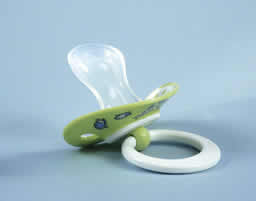
dental teat
Rather a cup than a bottle
From 9 months, use a cup without a spout instead of a baby bottle or anti-drip cup. If necessary, use a spout cup first as an intermediate step. In the evening and at night, drinking from a baby bottle with sweet content or milk is particularly harmful. At night there is less saliva to protect your teeth. You can always take a bottle of water to bed with you. Frequent sucking on a baby bottle or anti-drip cup with, for example, fruit juice, syrup, drinking yoghurt or other dairy products can affect the teeth. The teeth come into contact with sugars for a long time. This gives (baby bottle) caries more chance. Let your child drink their sweet drinks in one go. Choose tap water instead of sweet drinks.